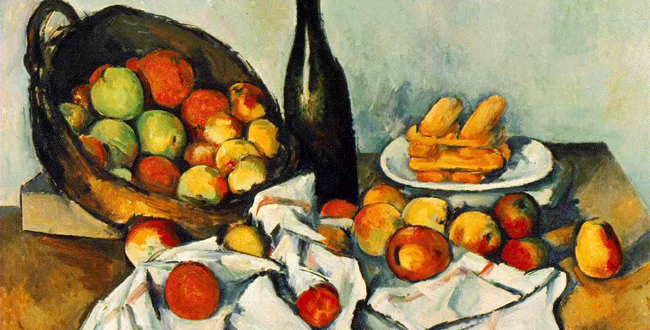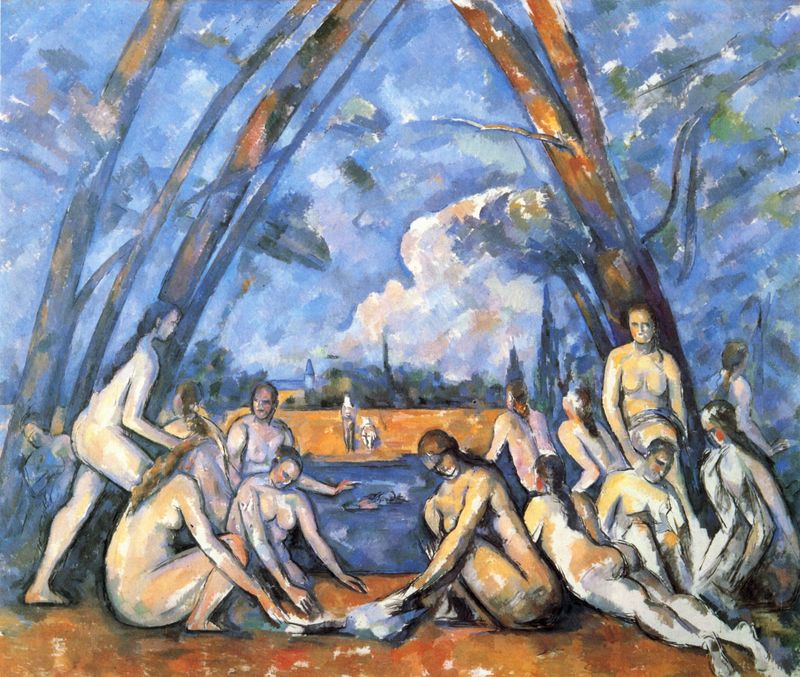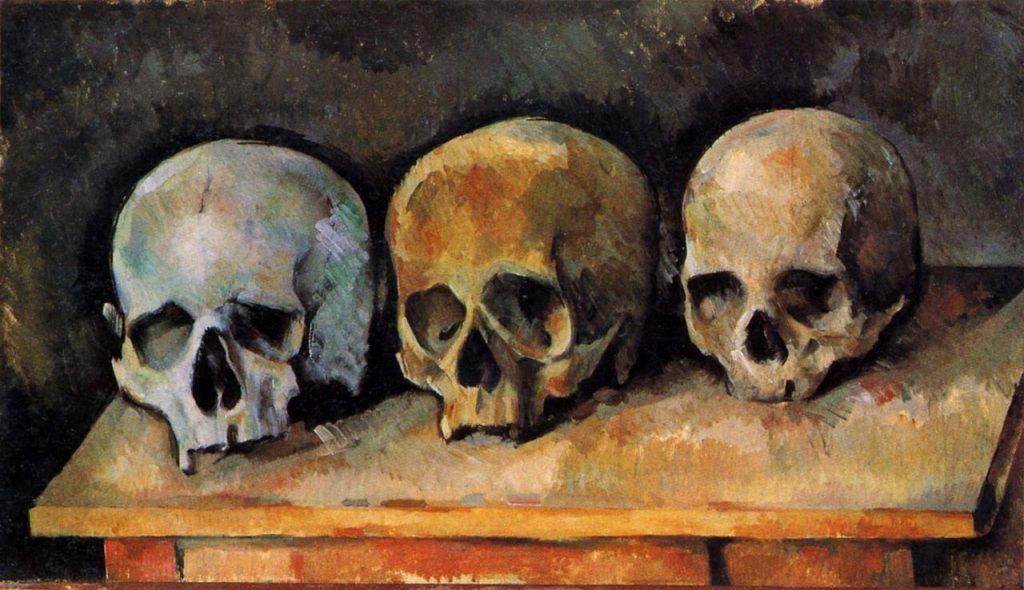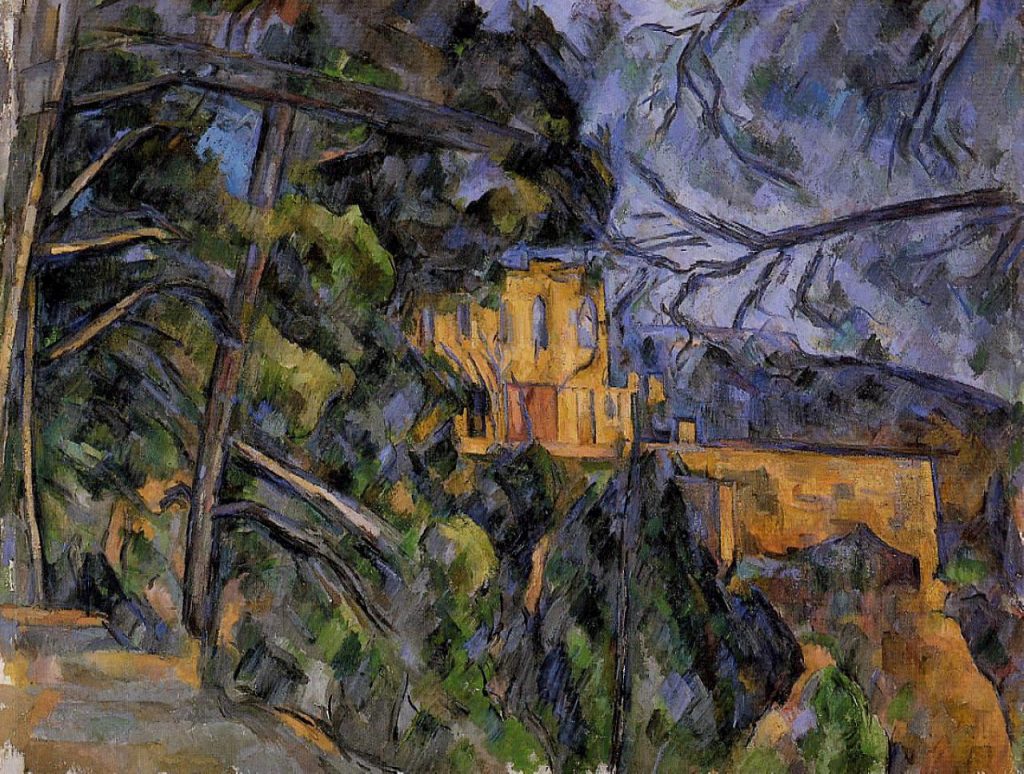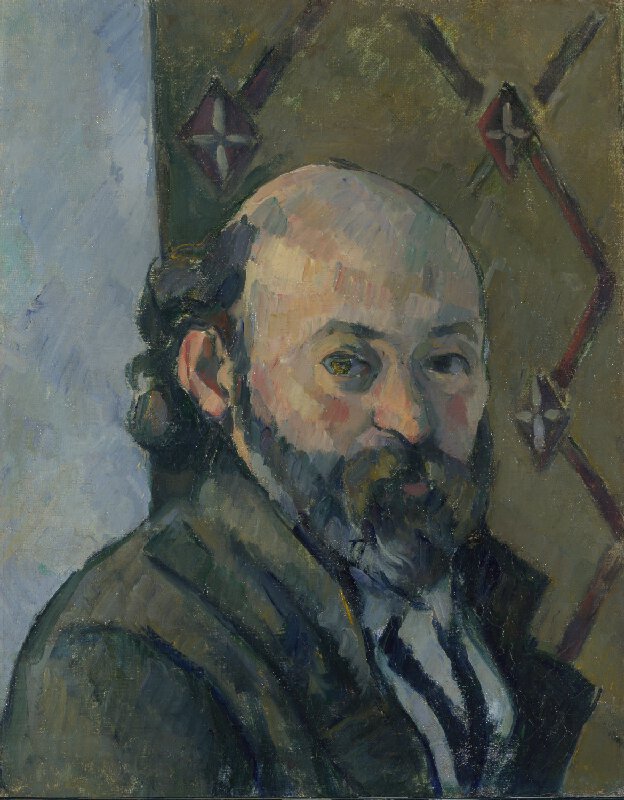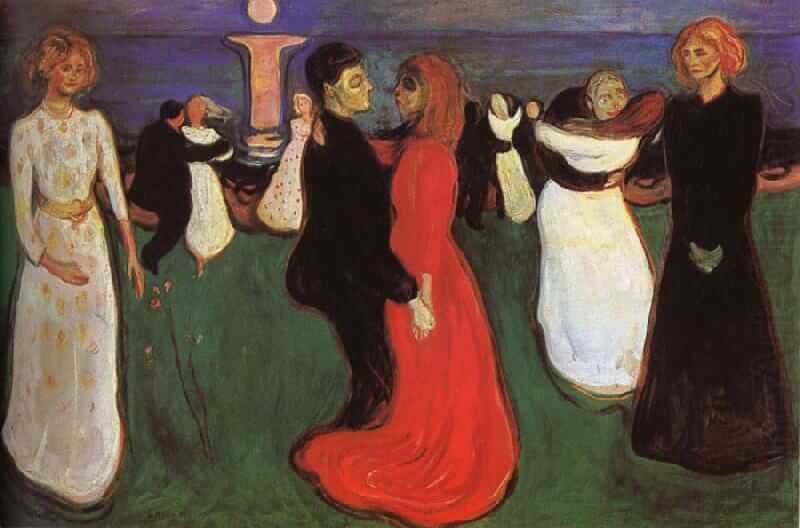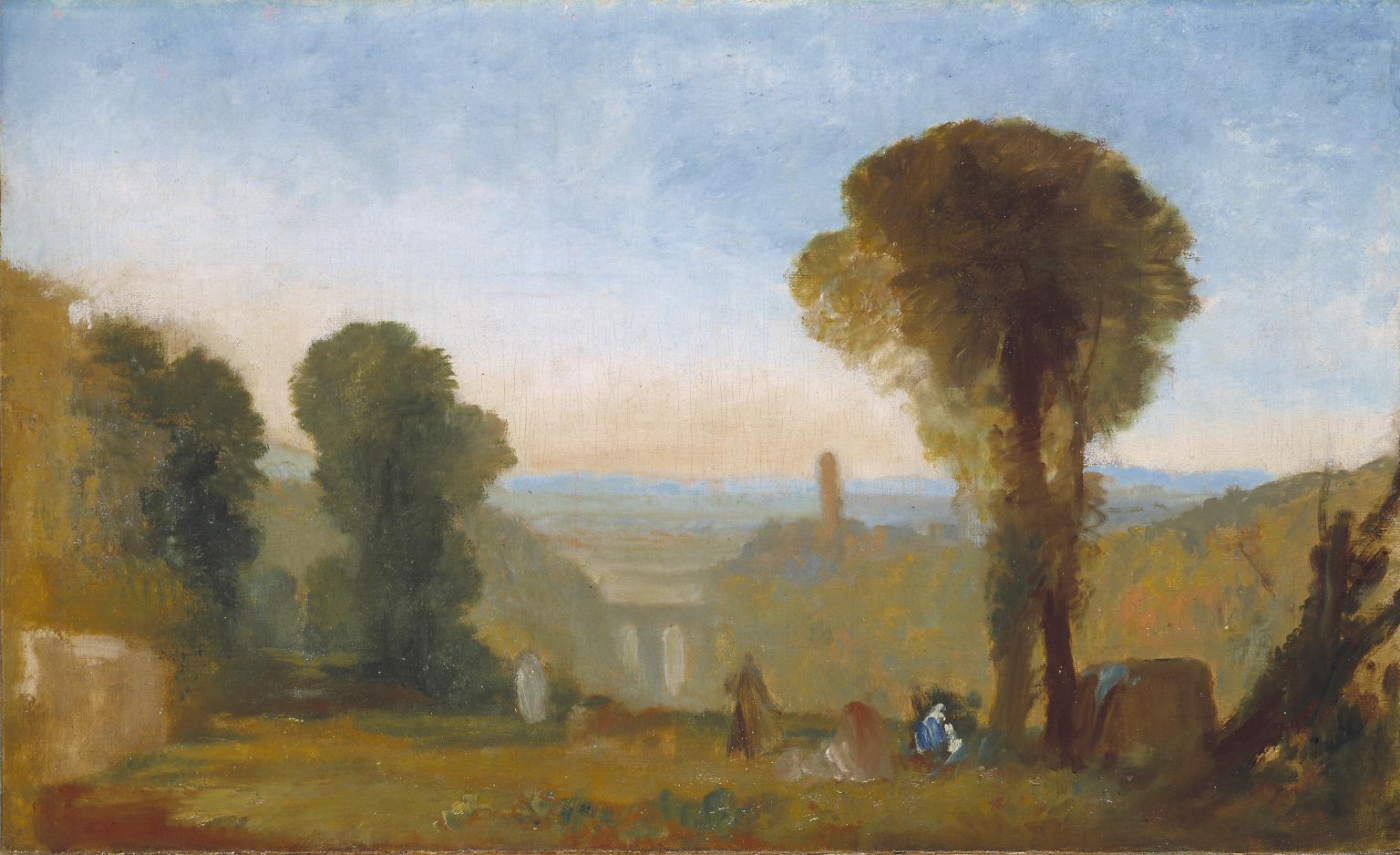12 of the Most Famous Paintings and Artworks by Paul Cézanne
A post impressionist painter, Paul Cézanne, remains acclaimed for creating a bridge between late 19th-century impressionism and early 20th-century materialistic art movements, namely Fauvism, Cubism, and Expressionism.
His art style, characterized by small brush strokes, undefined formations and an arduous zeal to simplify everything into concrete shapes was so distinctly progressive that the leading impressionists of his day openly disapproved it, and some even gave petitions to have him banned. In his world, color, line, and form constituted the same thing, with the canvas assuming the chief role in allowing a viewer to see things from various perspectives. It was only after his death that his invaluable contributions to modern art were acknowledged; something that led later eminent figures like Picasso and Matisse, to regard him as “the father of us all”.
Working for more than 40 years, he produced more than 900 oil paintings and 400 watercolors, many amidst which are incomplete.
Biography of Paul Cézanne in a Nutshell
| Birth | 19 Jan 1839, Aix‑en‑Provence, France |
| Nationality | French |
| Death | 22 Oct 1906, Aix‑en‑Provence, France |
| Mentors | Camille Pissarro |
| Inspirations | Pissarro’s en plein air style of painting |
| Periods | Post-Impressionism |
| Spouse | Marie-Hortense Fiquet 1850 – 1922 |
Famous Paul Cézanne Artworks
1. Basket of Apples
| Completed in: 1895 |
| Style: Post-Impressionism |
| Genre: Still life |
| Measurements: 79 x 62 cm |
| Location: Art Institute of Chicago, Chicago, IL, US |
| Medium: Oil on canvas |
The most notable feature of this monumental oil painting lies in the two different points of view it projects ‑ disjointed perspectives, a style effectively employed by Cézanne to resolve the soaring complications embedded in perceiving something visually. Consequently, it can be seen how the table’s right side is not on the same plane as the left side. In fact, it is the picture’s unbalanced parts – the slanted bottle, the inclined basket, that brilliantly succeed in rendering a realistic, balanced look.
2. Mont Sainte-Victoire
| Completed in: c.1895 |
| Style: Post-Impressionism |
| Genre: Landscape |
| Measurements: 92 x 73 cm |
| Location: Barnes Foundation, Lower Merion, PA, US |
| Medium: Oil on canvas |
A mountain in southern France, Montagne Sainte-Victoire, and Cézanne hometown, Aix-en-Provence, are the two prominent subject matters of this painting. In devolving the mountain, landscape, and buildings into simple forms, Cézanne magnificently upholds his skills of depicting fragmented reality and our distinct perception of it.
3. Forest
| Completed in: c.1890 |
| Style: Post-Impressionism |
| Genre: Landscape |
| Measurements: 92 x 72 cm |
| Location: White House, Washington, DC, US |
| Medium: Oil on canvas |
This work in portraying a wooded area, near his hometown Aix-en-Provence, highlights his love for untainted natural settings.
4. The Bathers
| Completed in: 1900 |
| Style: Post-Impressionism |
| Genre: Painting |
| Measurements: 191 x 136 cm |
| Location: Philadelphia Museum of Art, Philadelphia, United States |
| Medium: Oil on canvas |
Featured as one of the hundred greatest paintings in the BBC series, this masterpiece of modern art is known variously as “Large Bathers” or “Big Bathers” to differentiate it from other smaller “Bather” paintings of the artist. Purchased for a whopping $100,000 for the Philadelphia Museum of Art, it represents some nude figures and is a huge influence on later art masters such as Picasso, whose later piece, Les Desmoiselles d’Avignon, typically echoes Cézanne work.
5. The Card Players
| Completed in: 1892 |
| Style: Post-Impressionism |
| Genre: Painting |
| Measurements: 181.9 x 135.3 cm |
| Location: Barnes Foundation, Lower Merion, PA, US |
| Medium: Oil on canvas |
Depicting Provencal peasants engrossed in playing cards, The Card Players is profoundly arresting for involving certain marked variations from previous paintings of the genre. There are no rowdy gamers or crude depictions of violence; rather the insistence on quietness, with the cards signifying the sole means of communication amidst the preoccupied peasants, make the painting an apt representative of “human still life”. Painted during the final period, it belongs to a series of five oil paintings that are often regarded as a prelude to his final years.
6. The Three Skulls
| Completed in: c.1900 |
| Style: Post-Impressionism |
| Genre: Vanitas |
| Measurements: 61 x 34.9 cm |
| Location: Detroit Institute of Arts, Detroit, MI, US |
| Medium: Oil on canvas |
This painting is reminiscent of a period, when Cézanne, working in isolation was disturbed by thoughts of mortality. According to numerous critics, his mother’s death formed one of the major reasons behind such a negative disposition. It is also interesting to note that in most Catholic homes in those days, skulls were normally preserved and Cézanne specifically was a devout Catholic, with full knowledge of Christian texts. Two other notable paintings, “The Pyramid of Skulls” and “Still Life with Skull”, also echo Cézanne’s preoccupation with the idea of death.
7. Chateau Noir
| Completed in: c.1904 |
| Style: Cubism |
| Genre: Landscape |
| Measurements: 73.6 x 93.2 cm |
| Location: Private collection |
| Medium: Oil on canvas |
An old country house called Château Noir, located on a hillside near the Bibémus quarry as well as trees and rocks in the park of the Château, provided Cézanne brilliant motifs to paint this exceptional work. With dominant shades of dark green and blue, the scene of the Noir became indicative of his brooding temperament that was largely an after-effect of his illness from diabetes.
8. A Modern Olympia
| Completed in: c.1873 |
| Style: Post‑Impressionism |
| Genre: History painting |
| Measurements: 46 x 55.5 cm |
| Location: Musee d’Orsay, Paris, France |
| Medium: Oil on canvas |
Two pictures on the same theme were drawn by Cézanne in different times and this one, the second of the two paintings, was executed as a result of an animated discussion between Cézanne and his admirer, Dr. Paul-Fernand Gachet on Manet’s works. The work, bluntly showing a naked servant revealing an equally unclothed Olympia with a bearded man calmly witnessing the scene, concerns the habitual visit of a client to a prostitute’s chamber and was highly criticized during that time.
9. Curtain, Jug and Fruit Bowl
| Completed in: 1894 |
| Style: Post-Impressionism |
| Genre: Still life |
| Measurements: 72.4 x 59 cm |
| Location: Whitney Museum of American Art, New York |
| Medium: Oil on canvas |
Hailing as one of the most expensive art items ever sold, the chief attraction of this painting constitutes its three-dimensional perspective. The sensation of smell evoked makes one feel as if he can easily take up the fruits from the table, thereby brilliantly glorifying realism.
10. Kitchen Table
| Completed in: 1890 |
| Style: Post-Impressionism |
| Genre: Still life |
| Measurements: 65 x 81 cm |
| Location: Musée d’Orsay, Paris |
| Medium: Oil on canvas |
The intriguing way the varied objects are depicted here reinforces Cézanne’s minute investigation of forms so as to reduce them to simpler geometries. Thus, the white tablecloth seems to contain myriad colors, the yellow fruit seems to float in the air, and the gray ginger pot has no space to rest.
11. Trees and Houses
| Completed in: 1886 |
| Style: Post-Impressionism |
| Genre: Landscape |
| Measurements: 73 x 54 cm |
| Location: Musée de l’Orangerie, Paris, France |
| Medium: Oil on canvas |
The artwork, containing houses and leafless trees, actually refers to a hamlet near Le Jas de Bouffan, the Cézanne family residence near Aix-en-Provence. The dark colored trees standing out against the light houses are suggestive of Cézanne’s lean and articulated brush marks, his particular dealing of his subject with great economy.
12. Self‑Portrait
| Completed in: 1800 |
| Style: Post‑Impressionism |
| Genre: Self‑Portrait |
| Measurements: 34.7 x 27cm |
| Location: Tate Gallery, London |
| Medium: Oil on canvas |
This is one of the numerous portraits, he drew on himself and it follows his usual preferences for standing half sidelong, a pose that highlights his hesitant self or his wish to remain obscure.
Besides these, there are other significant paintings of Cézanne that are widely popular such as “The Murder”, the “Rose Bush”, the “Blue Vase” or the portrait of his maternal uncle, called, “Antoine Dominique Sauveur Aubert” and that of his wife, Hortense Fiquet, called “Madame Cézanne in a Red Armchair”.
Subscribe now
Get lasest updates in your inbox


